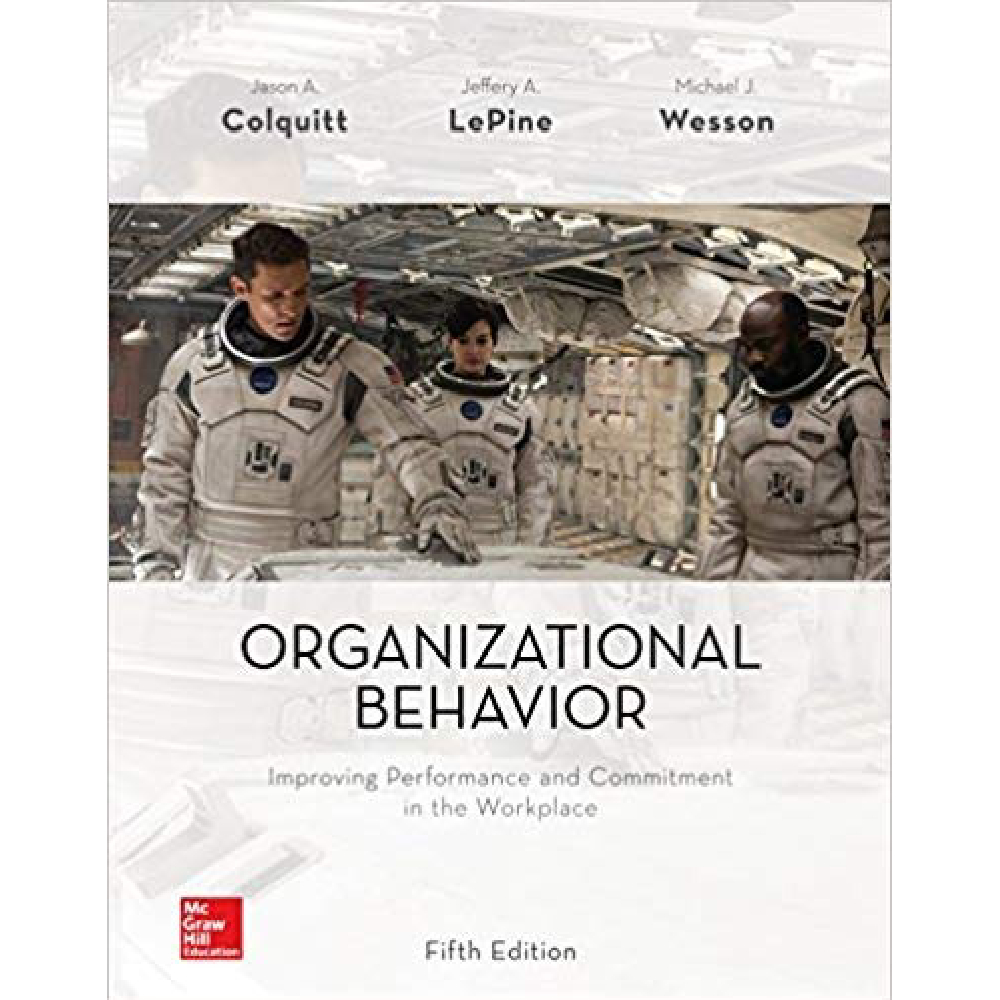Organizational Behavior Improving Performance And Commitment In The Workplace 5th Edition By Jason Colquitt – Test Bank
$55.00
Organizational Behavior Improving Performance And Commitment In The Workplace 5th Edition By Jason Colquitt – Test Bank
You will receive this product within 24 hours after placing the order
Organizational Behavior Improving Performance And Commitment In The Workplace 5th Edition By Jason Colquitt – Test Bank
Chapter 11 Teams: Characteristics and Diversity Answer Key
True / False Questions
1. A team consists of two or more people who work independently over some time period to accomplish common goals related to some task-oriented purpose.
FALSE
A team consists of two or more people who work interdependently over some time period to accomplish common goals related to some task-oriented purpose.
AACSB: Teamwork
Accessibility: Keyboard Navigation
Blooms: Remember
Difficulty: 1 Easy
Learning Objective: 11-01 What are the five general team types and their defining characteristics?
Topic: Work group
2. Work teams are designed to be relatively permanent.
TRUE
Work teams are designed to be relatively permanent.
AACSB: Teamwork
Accessibility: Keyboard Navigation
Blooms: Remember
Difficulty: 1 Easy
Learning Objective: 11-01 What are the five general team types and their defining characteristics?
Topic: Work group
3. Management teams are formed to take on “one-time” tasks that are generally complex.
FALSE
Project teams are formed to take on “one-time” tasks that are generally complex.
AACSB: Teamwork
Accessibility: Keyboard Navigation
Blooms: Remember
Difficulty: 1 Easy
Learning Objective: 11-01 What are the five general team types and their defining characteristics?
Topic: Work group
4. A football team is an example of an action team.
TRUE
Action teams perform tasks that are normally limited in duration. However, those tasks are quite complex and take place in contexts that are either highly visible to an audience or of a highly challenging nature.
AACSB: Teamwork
Accessibility: Keyboard Navigation
Blooms: Understand
Difficulty: 2 Medium
Learning Objective: 11-01 What are the five general team types and their defining characteristics?
Topic: Work group
5. On a highly self-managed team, there are strict rules regarding goals, procedures, and roles.
FALSE
When self-management is low, there are strict rules regarding goals, procedures, and roles.
AACSB: Teamwork
Accessibility: Keyboard Navigation
Blooms: Understand
Difficulty: 2 Medium
Learning Objective: 11-01 What are the five general team types and their defining characteristics?
Topic: Self-managed teams
6. High levels of self-management may be most advantageous for teams where members have high levels of team-relevant knowledge obtained from outside experts and others in their social networks.
TRUE
Research has shown that high levels of self-management may be most advantageous for teams where members have high levels of team-relevant knowledge obtained from outside experts and others in their social networks.
AACSB: Teamwork
Accessibility: Keyboard Navigation
Blooms: Understand
Difficulty: 2 Medium
Learning Objective: 11-01 What are the five general team types and their defining characteristics?
Topic: Self-managed teams
7. In the storming stage of team development, feelings of solidarity develop as members work toward team goals.
FALSE
Storming is where the members remain committed to ideas they bring with them to the team. In norming, feelings of solidarity develop as members work toward team goals.
AACSB: Teamwork
Accessibility: Keyboard Navigation
Blooms: Understand
Difficulty: 2 Medium
Learning Objective: 11-01 What are the five general team types and their defining characteristics?
Topic: Team building
8. The sequence of forming, storming, norming, performing, and adjourning applies to the development of all teams.
FALSE
The sequence of forming, storming, norming, performing, and adjourning does not apply to the development of all teams. There are factors in work organizations that can significantly alter what occurs during a team’s life.
AACSB: Teamwork
Accessibility: Keyboard Navigation
Blooms: Remember
Difficulty: 1 Easy
Learning Objective: 11-01 What are the five general team types and their defining characteristics?
Topic: Team building
9. With pooled interdependence, group members complete their work assignments independently, and then this work is simply “piled up” to represent the group’s output.
TRUE
With pooled interdependence, group members complete their work assignments independently, and then this work is simply “piled up” to represent the group’s output.
AACSB: Teamwork
Accessibility: Keyboard Navigation
Blooms: Remember
Difficulty: 2 Medium
Learning Objective: 11-02 What are the three general types of team interdependence?
Topic: Task performance
10. Jan works on the budget team. Members include the bookkeeper who tracks the daily expenditures and revenues of the company; the accountant who takes the bookkeeper’s work and organizes it into financial statements, including the cash flow statement, the income statement, and the balance sheet; and the analyst who interprets the financial statements. Once these three tasks have been accomplished, Jan prepares and presents the results to top management. Jan’s team engages in reciprocal interdependence.
FALSE
This team engages in sequential interdependence. Each step must be completed before the next person can begin his or her step. In sequential interdependence, the member performing the task in the latter part of the sequence depends on the member performing the task in the earlier part of the sequence, but not the other way around.
AACSB: Knowledge Application
Accessibility: Keyboard Navigation
Blooms: Apply
Difficulty: 2 Medium
Learning Objective: 11-02 What are the three general types of team interdependence?
Topic: Task performance











Reviews
There are no reviews yet.